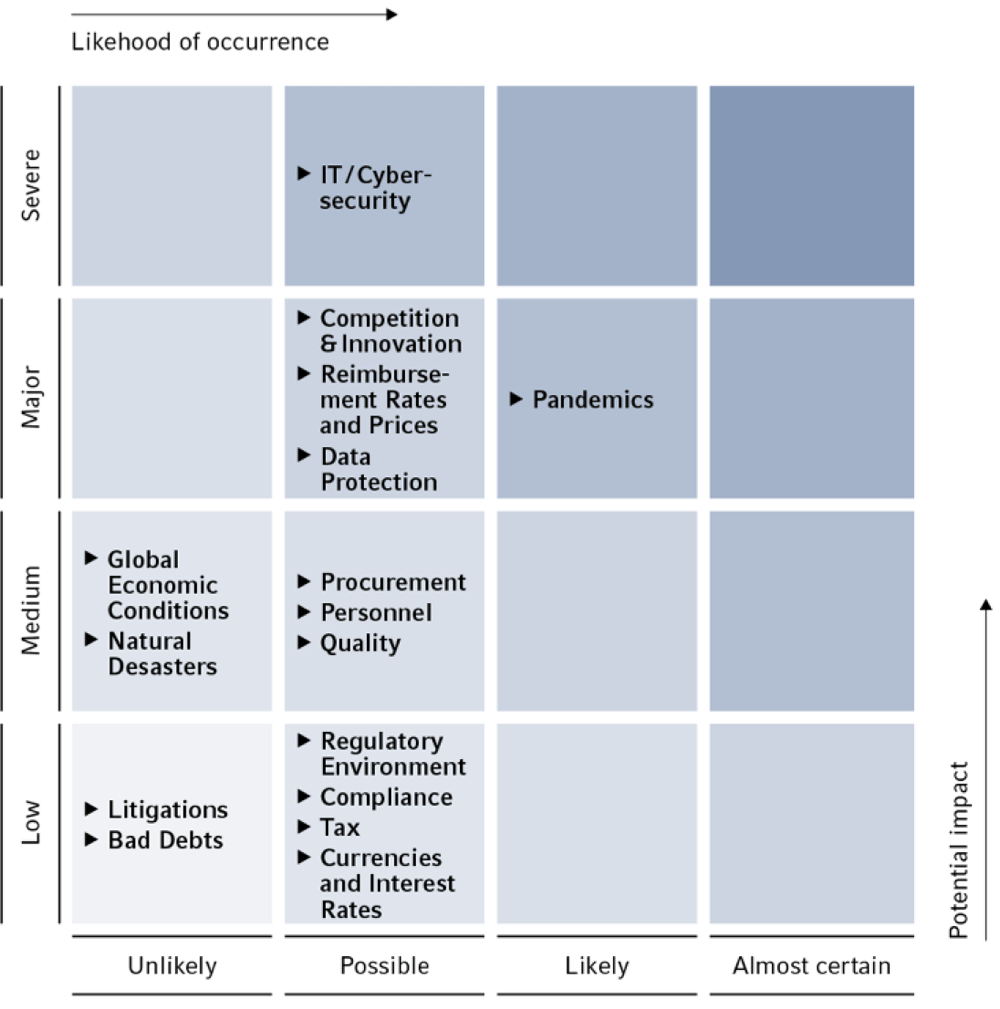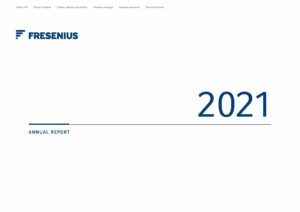The established risk management and internal control system is fundamental for assessing the overall risk position of the Fresenius Group. Potential risks for Fresenius include factors beyond our direct control. These also include the macroeconomic development, which we constantly monitor. They also include factors immediately within our control, such as operating risks, which we anticipate at as early a stage as possible and to which we react with appropriate countermeasures, as required.
In synopsis, there are currently no recognizable risks that appear to present a long-term and significant threat to the Fresenius Group’s business, financial position, and operational result.
We have created organizational structures that provide all the conditions needed to rapidly alert us to possible risk situations and enable us to take suitable countermeasures.
Risks affecting the one-year forecast period
The chart besides shows the significant risks that could lead to deviations from the expected business performance within the one-year forecast period.
Compared with the previous year, the matrix was expanded to four instead of three dimensions for probability of occurrence and potential impact. Based on our quantitative analysis, risks relating to competition and innovation, as well as loss of receivables and data privacy, were newly included.
In addition, the potential impact of IT and cybersecurity risks and procurement risks has been increased. The potential impact of compliance risks, risks relating to the regulatory environment, and currency and interest rate risks decreased.
Risks affecting the one year forecast period

Risks with effects on our medium-term goals
Fundamentally, all the risk areas and risks listed in the Risk Report could lead to us failing to achieve our medium-term goals. We believe the following will be of particular significance in this respect:
- Risks relating to the quality, safety, and effectiveness of our products and services
(see Risk areas); - Risks arising from the financing of health care systems and potential changes to reimbursement systems (see Risk areas);
- Risks arising from the regulatory environment and compliance with laws and regulations
(see Risk areas); - Risks arising from the medium- and long-term effects of the COVID-19 pandemic, such as changes in demand and cost base (see Risk areas);
- Risks relating to information technology and cyber security (see Risk areas).

